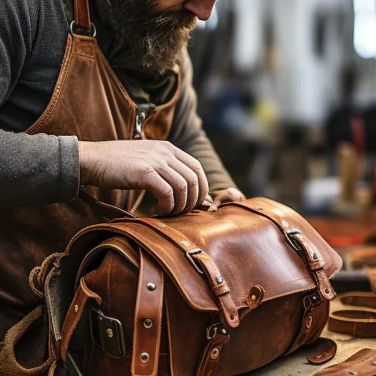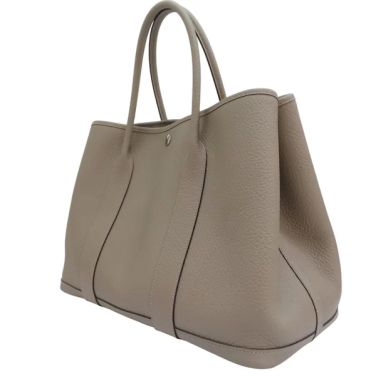1. Introduction: Why Leather Handbag Care Matters
Leather handbags are timeless accessories that not only complement your wardrobe but also offer durability and style. However, without proper care, the leather can lose its sheen, develop cracks, or stain easily. Whether you're a first-time leather owner or have a collection of high-end bags, understanding how to care for leather handbags is essential to preserve their beauty and extend their lifespan.
In this article, we will dive into the best practices for leather care, from cleaning and conditioning to storing your bags correctly. With the right knowledge and tools, your leather handbags will look as good as new for years to come.
2. Understanding Leather and Its Needs
Leather is a natural material made from animal hides, typically cows, and is known for its strength and versatility. However, because it is organic, leather requires a bit more attention than synthetic materials. Unlike fabrics or plastics, leather can dry out, crack, or discolor when exposed to environmental stressors like heat, moisture, and sunlight.
Understanding the specific needs of leather allows you to choose the right cleaning and conditioning products. Some leathers may require more frequent conditioning, while others need protection from water damage. Getting familiar with your bag's material will help you decide on the best care routine.
3. Cleaning Your Leather Handbag
Before you start cleaning your leather handbag, always ensure that it is free from any dirt or debris. Use a soft brush or cloth to gently remove any particles from the surface. When it comes to cleaning, there are a few methods to consider:
- Water and Soap Solution: Mix mild soap with water, and use a damp cloth to wipe the bag’s surface gently. Avoid soaking the leather to prevent water damage.
- Leather Cleaner: There are specialized leather cleaners available that are designed to remove stains without damaging the material. Always test a small, inconspicuous area before applying it to the entire bag.
- Vinegar Solution: If your bag has light stains, a vinegar solution (one part vinegar, two parts water) can help remove them. Use a soft cloth to gently wipe the area.
Remember, leather is delicate, and harsh cleaning methods can cause damage, so always use gentle products and methods for best results.
4. Conditioning and Protecting Your Leather Bag
Just like your skin, leather needs moisture to stay supple. Over time, the natural oils in the leather can deplete, leading to cracks or stiffness. Conditioning your leather handbag regularly is essential to maintaining its softness and elasticity.
Leather conditioners are designed to restore moisture and nourish the leather. Apply the conditioner sparingly, using a clean, soft cloth to rub it into the bag in a circular motion. Make sure to use a product suitable for the specific type of leather your bag is made from, as different finishes may require different treatments.
Additionally, you should protect your leather handbag from external elements like rain, sunlight, and dirt. Consider investing in a leather protector spray, which can help prevent water stains and UV damage. Always follow the product instructions for optimal protection.
5. Storing Leather Handbags
Proper storage is key to keeping your leather handbag in top condition. When you're not using your bag, it's important to store it properly to maintain its shape and prevent damage:
- Keep Your Bag in a Dust Bag: A dust bag helps protect the bag from dirt and dust when it's not being used. Make sure to store it in a cool, dry place.
- Avoid Overpacking: Overstuffing your bag can stretch and deform the leather. To maintain its shape, store it with light padding inside, like tissue paper or a cotton bag.
- Store in a Cool, Dry Area: Avoid storing your leather handbag in a hot, humid environment, as this can cause the leather to warp, crack, or fade.
Taking the time to store your leather bags properly will ensure they stay looking their best for years to come.
6. Dealing with Specific Leather Issues
Leather handbags can encounter specific issues that may require special care. Here are some common problems and how to address them:
- Water Stains: If your bag gets wet, gently blot the moisture with a soft cloth. Let the bag dry naturally, away from direct heat sources. You can use a leather cleaner or vinegar solution to treat water stains.
- Scuff Marks: Scuff marks can be treated with a leather cleaner or a specialized leather eraser. Use a soft cloth to gently rub the affected area.
- Cracks or Dryness: If your bag becomes dry or cracked, apply a leather conditioner to restore moisture and elasticity. In severe cases, you may need to take your bag to a professional for repair.
By taking proactive steps and treating specific issues promptly, you can keep your leather handbags in great shape.
7. Conclusion: Investing in Quality Care
Taking care of your leather handbags is an investment that pays off in the long run. Whether you're cleaning, conditioning, or storing your bag, proper care ensures that your leather bag will maintain its elegance and function. By following the tips above, you'll not only extend the life of your favorite handbags but also protect your investment in timeless luxury.
To ensure your leather bags are properly cared for, consider investing in high-quality leather care products and regularly maintaining your bags. Visit our site, Feima Bags, for the best leather care products and expert advice to keep your bags looking as good as new.














